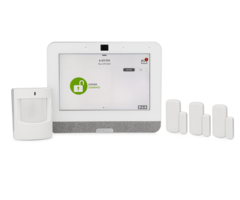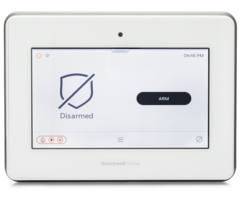Alarm Control Panels



The centerpiece of any security set up is the alarm control panel. All of a user’s security devices, life-safety devices and home automation devices can be connected with an alarm control panel to provide the user with one convenient tool for accessing and controlling their entire set up. The sheer amount of capabilities and functions of a modern alarm control panel truly is astounding, and the possibilities of what can be done is virtually endless. At Alarm Grid, we feature some of the industry’s latest and most technologically advanced systems that can be utilized in a huge number of amazing ways.
The primary goal of an alarm control panel is to keep the home or business safe and secure. This is done by connecting the system with various security and life-safety devices that monitor the building in different ways. Each device will do its job to keep the home or business fully protected. The alarm control panel is the hub of this set up, and it is used to manage and check the status of any device that is connected with this network. If the user ever needs to add or delete a device from their network, they will do so through their alarm control panel.
Whenever a device is activated, the zone associated with that device will be displayed on the alarm control panel, alerting the user of the problem that has occurred. This is a convenient and easy way for a user to recognize what type of situation is happening and where exactly it is taking place inside their home or business. This will allow the user to quickly respond in the appropriate way. A user can also program the device to immediately contact a central monitoring station when activated so that emergency personnel can be dispatched in the event of a dangerous situation, such as a fire or a break-in.
An alarm control panel works primarily through arming and disarming. An armed state means that the panel is using its security devices to actively monitor the building for any signs of an intrusion. For instance, if the panel is armed, and a door contact or motion sensor is activated, then the panel will respond. At this point, the system must be quickly disarmed with a valid user code in order to let the system know that everything is okay. If a valid code is not entered, then the system will assume that an unwanted intruder is present, and an alarm will be sounded. People usually keep their systems armed when they are away during the day or at night when they are asleep, and they usually keep the system disarmed when they are active inside the house. This will allow them to keep their home secured, while also preventing the occurrence of any false alarms.
In addition to security, alarm control panels can also be used for the purpose of home automation by connecting with Z-Wave devices. This allows users to control devices such as the lights in their home and their thermostat using their alarm control panel. Most alarm control panels can also connect with an interactive service, such as Alarm.com or Total Connect. Using these services, users can remotely activate their Z-Wave devices, arm or disarm their panel and check the current status of the system from virtually anywhere.









